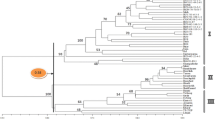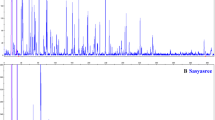Abstract
Before somatic embryogenesis can be applied, the genetic fidelity of cultures needs to be determined. Problematic of tissue-cultured woody species is the extensive evaluation time needed for assessments. The development of methods whereby plants could be rapidly screened for potential tissue culture-derived genetic changes would be very valuable. We evaluated the applicability of AFLP (amplified fragment length polymorphism) analysis for the assessment of genetic variability in somatic embryos of pecan [Carya illinoinensis (Wangenh.) C. Koch] and made comparisons between and within embryogenic culture lines. AFLP readily detected differences between culture lines, with 368 polymorphic loci identified. Individual culture lines generally produced somatic embryos with similar overall banding patterns. Embryos derived from the same culture line generally grouped together in a phenogram generated by UPGMA (unweighted pair-group method, arithmetic average) analysis. However, a few somatic embryos exhibited higher levels of polymorphism and failed to group with others regenerated from the same line. The relation between the detected within-line differences and their contribution to phenotypic variation is yet to be determined.
Similar content being viewed by others
Author information
Authors and Affiliations
Additional information
Received: 9 September 1998 / Revision received: 12 November 1998 / Accepted: 8 December 1998
Rights and permissions
About this article
Cite this article
Vendrame, W., Kochert, G. & Wetzstein, H. AFLP analysis of variation in pecan somatic embryos. Plant Cell Reports 18, 853–857 (1999). https://doi.org/10.1007/s002990050673
Issue Date:
DOI: https://doi.org/10.1007/s002990050673




